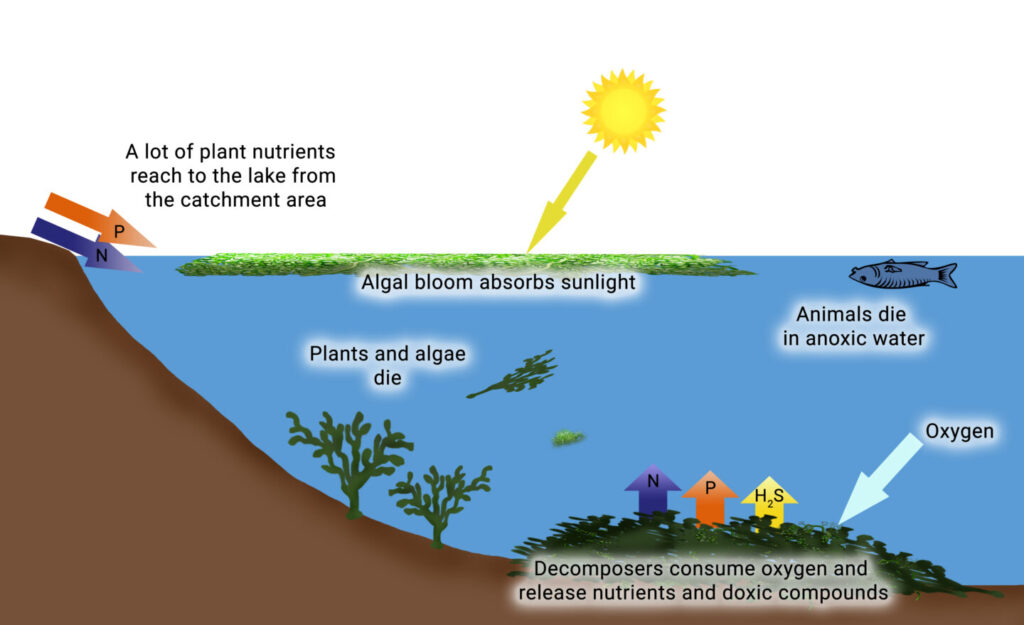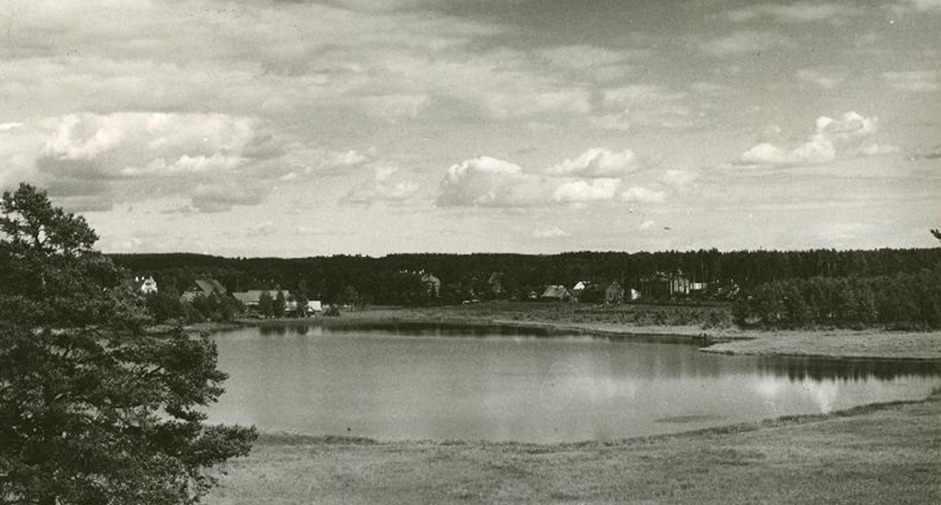Over the years man has strongly influenced Lake Arbi. For decades water has flowed into the lake from the fields, streets and households of the Moonuse Stream catchment area and even from the wastewater treatment ponds. Bathers also do have an impact. Thus, a lot of pollutants have accumulated in the lake, which act as fertilizers for the plants. Eutrophication has taken place and the lake has become hypertrophic. This process occurs without human impact too, as the catchment nutrients from natural ecosystems also leach into the lake. Naturally, however, it takes a lake thousands of years to reach the hypertrophic state; due to human activity, decades. The consequences of eutrophication are algal blooms, a decrease in the water’s oxygen content, and overgrowth of the lake.

The consequences of eutrophication for the lake ecosystem. Figure: Piret Vutt.
The condition of the lake has been improved by rehabilitation. As early as the 1970s gravel was transported to the muddy sediments near the shore. At the beginning of this millennium some of the nutrient-rich mud was removed from the lake and spread on the shore at the song festival grounds, where the swampy area was turned into a lawn. Sediment ponds were built on the most important inflows, and the streams were made more rapid by rocks, so the water became richer in oxygen. The sediment pond of the Moonuse Stream is next to this information board. The water level was lowered to make the shore path dry. It had been high due to the blockage in the outflow. The beach was rehabilitated. In 2020 a large platform was built above the water in the southeast corner of the lake.

Author: Liina Remm